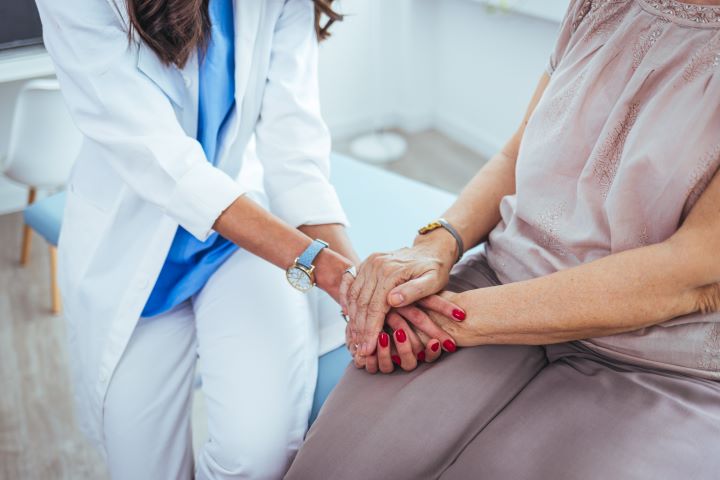Reviving Human Connection: The Power of Touch in Post-Pandemic Elder Care

-1.png?width=389&height=389&name=CT%20hands(1200%20%C3%97%201200%20px)-1.png)
The COVID-19 pandemic has shed light on the significant challenges faced by older adults, particularly in terms of loneliness and social isolation. As we navigate the post-pandemic world, it is crucial to review what we know to be true about the well-being of elders and the ethical responsibilities of care providers. In this blog, we will explore the impact of social isolation, the vulnerabilities of elders living alone or in congregate settings, and the ethical dilemmas faced by care providers. Additionally, we will discuss a powerful solution that can immediately enhance the lives of elders—incorporating expressive touch into caregiving protocols.
Let's review what we know to be true today for elders and care providers, post-pandemic.
1. Loneliness and Isolation is linked to serious health conditions.
Loneliness and social isolation have been linked to various serious health conditions among older adults. This article by the Centers for Disease Control and Prevention highlights the heightened risk faced by elders due to factors such as living alone, loss of loved ones, chronic illness, and hearing loss. Shockingly, social isolation has been associated with a 50% increased risk of dementia and other medical conditions. Drawing attention to the gravity of the situation, the US Surgeon General recently warned that being socially disconnected has a similar effect on mortality as smoking up to 15 cigarettes a day!
2. Elders living alone and in congregate settings were especially vulnerable with an inability to leave their residence and the prohibition on in-person visiting.
Elders living alone or in congregate settings faced unique vulnerabilities during the pandemic, with restrictions on leaving their residences and in-person visits being prohibited. An editorial in the Journal of Nutrition, Health, and Aging makes the argument for elder care providers to intentionally intervene in addressing social isolation by developing and testing interventions.
3. Care providers continue to face ethical dilemmas.
- Did we produce more harm than good by socially isolating elders?
- Was the benefit of isolation worth the burden?
- To what degree were autonomy and self-determination violated?
No doubt, research, and debate will ensue for years to come. In the meantime, elder care providers are faced with a pressing moral and ethical mandate to immediately adopt intentional strategies to mitigate loneliness and isolation for the elders in their care. The ethical principle to do good can no longer be ignored.
We have a moral obligation to reduce social isolation and recognize the older adult as a valuable member of society with equal worth and dignity.
Resurrecting expressive touch back into the care of the elderly is an immediate and impactful step for aging services providers.
Touch communicates what words cannot and elevates human connection. In this day when care protocols have become even more task-focused, we have strayed too far away from person-first care. The positive impact of incorporating expressive touch in care protocols is immediate for both care partners.
Research is deep and conclusive about the benefits of using touch in caregiving. Touch is accessible to everyone and requires only an intentional presence and evidence-informed technique, and two willing care partners.
For inspiration, you are invited to enjoy this reflection, created after delivering Compassionate Touch training in an Ohio skilled nursing community.
Compassionate Touch Reflection by Julie Boggess, LNHA, CDP


